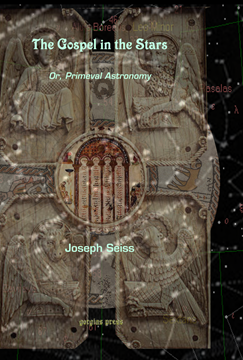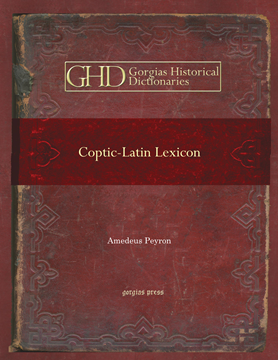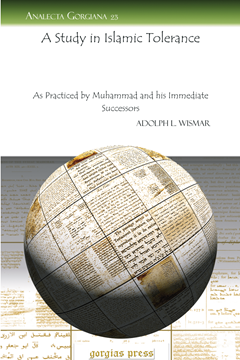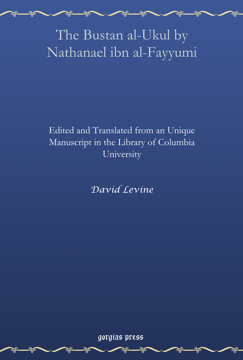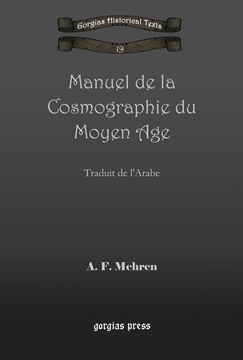Islam in China
A Neglected Subject
ISBN: 978-1-59333-568-7
As an active missionary to China from a family of missionaries, Broomhall wrote with an authoritative familiarity of his subject. The concern he addressed in this treatise was the presence of Islam in China. Beginning with the history of Islam in China, Broomhall explores the interactions between aspects of Chinese culture and Islamic religion with an eye towards the effect on evangelization.
$182.00 (USD) $109.20 (USD)
The Gospel in the Stars
Or, Primeval Astronomy
By Joseph Seiss
ISBN: 978-1-59333-569-4
The charm of Seiss’ thesis saw this intriguing book through five editions in the author’s lifetime. Exploring potential Christian imagery in the constellations, Seiss finds the message of redemption writ large in the nighttime sky. A truly original work, this book has held the interest of many readers over the decades.
$212.00 (USD) $127.20 (USD)
Palestine Past and Present
With Biblical, Literary, and Scientific Notices
Series: Kiraz Historic Travels Archive 9
ISBN: 978-1-59333-570-0
A nineteenth-century travelogue in a class by itself, Osborn’s account of his travels through the Holy Land is sprinkled with literary, biblical, and scientific observations. This work on the physical geography of the Holy Land remains undiminished despite the years since its publication.
$232.00 (USD) $139.20 (USD)
Coptic-Latin Lexicon
Lexicon Copticum
Series: Kiraz Historical Dictionaries Archive 8
ISBN: 978-1-59333-571-7
Peyron’s lexicon is the classic Coptic-Latin dictionary of the early twentieth century. It is of special historical importance because of the association of Peyron with Champollion, Napoleon’s epigrapher on his Egyptian voyage. Placed so early in the dawn of Egyptian studies, Peyron sheds light from an eye undimmed by the subsequent decades of scholarship.
$273.00 (USD) $163.80 (USD)
Travels and Adventures 1435-1439
Series: Kiraz Historic Travels Archive 8
ISBN: 978-1-59333-578-6
The remarkable narrative of the Medieval traveler Pero Tafur comes from a single manuscript written before the printing press was invented. Letts presents the journeys of Tafur through Europe and the Holy Land during the years 1435-1439 when the voyager was in his mid-twenties. A wealth of information about pre-modern Europe and Palestine await the reader of this account.
$154.00 (USD) $92.40 (USD)
Sumerian Records from Drehem
Series: Analecta Gorgiana 22
ISBN: 978-1-59333-579-3
Now a fixture in Sumerian studies, Nesbit’s initial publication of thirty tablets from Drehem is deceptively pedestrian at first glance. As the author demonstrates, a close look at these texts reveals invaluable information on the religious and social life of everyday Sumerians.
$55.00 (USD) $33.00 (USD)
A Study in Islamic Tolerance
As Practiced by Muhammad and his Immediate Successors
Series: Analecta Gorgiana 23
ISBN: 978-1-59333-580-9
The continuing developments in Islam since Wismar’s time make this book as relevant today as it was when it was published. The question explored here is what the approach of Islam is towards religious tolerance. To get at the answer, Wismar went back to the Quran and the practice of Muhammad, Abu Bakr, and Umar Ibn al-Khattab, the first two Caliphs, in order to determine what the primary sources taught on the issue.
$58.00 (USD) $34.80 (USD)
St. Cyril of Alexandria, A New Testament Exegete
His Commentary on the Gospel of John
ISBN: 978-1-59333-581-6
This study portrays Cyril of Alexandria as exegete and theologian through an examination of his Commentary on the Gospel John. It begins with an attempt to place Cyril and his commentary within their context. This work argues that Cyril wrote his Commentary on the Gospel of John early in his writing career, almost a decade before becoming bishop. Cyril’s commentary on the Johannine Gospel reveals his exegetical method and his strong Trinitarian theology. The commentary also focuses on the nature and work of the Holy Spirit: the indwelling of the Spirit is the beginning of the newness of life.
$174.00 (USD) $104.40 (USD)
The Bustan al-Ukul by Nathanael ibn al-Fayyumi
Edited and Translated from an Unique Manuscript in the Library of Columbia University
By David Levine
ISBN: 978-1-59333-584-7
The Garden of Wisdom is a rare Jewish systematic theology, here presented in English translation as well as in the Arabic (in Hebrew script) original. It is a treatise of the theology of the Jews living in Southern Arabia written by Nathanael Ibn al-Fayyumi in the twelfth century when the Jews of Yemen were undergoing persecution.
$144.00 (USD) $86.40 (USD)
Manuel de la Cosmographie du Moyen Age
Traduit de l'Arabe
By A. F. Mehren
Series: Kiraz Chronicles Archive 22
ISBN: 978-1-59333-588-5
A fine example of Arabic science, Shams ed-Din abu-Abdullah Muhammad al-Dimashqi’s Cosmography has almost been forgotten by the Western world. Translated into French by A. F. Mehren, this important historical text will now be widely available.
$197.00 (USD) $118.20 (USD)

